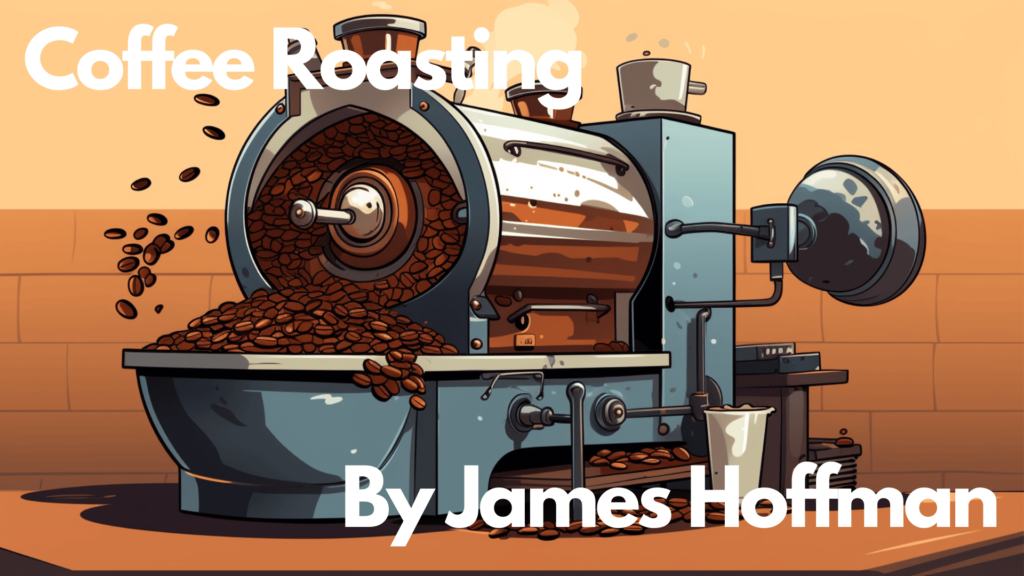In this Article:
- The 3 Characteristics of Coffee Flavor
- The roasting Process from Raw to Dark Roast
- Specialty vs Commercial Roasting
- Roast Profile
- How Coffee Roasting Machines Actually Work
The 3 Characteristics of Coffee Flavor

Coffee roasting is an artform that takes green coffee beans and transforms them into the flavorful, aromatic beans you love. This whole roasting process requires specific timing and carefully controlled and monitored heat exposure to bring out the most flavor from each bean’s profile.
Three main factors affect a coffee's flavor.
Bitterness
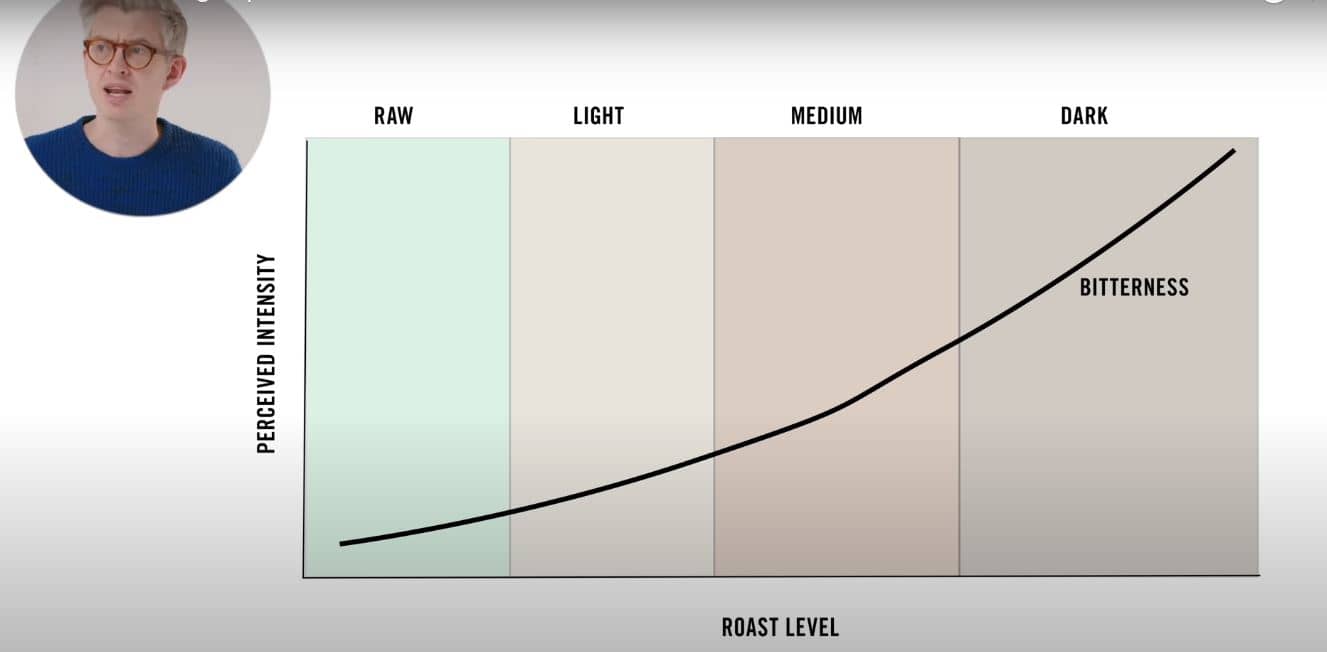
First up is bitterness. The longer you roast your coffee, the darker the color gets. So, just like caramel, the darker it gets, the more bitter notes you’ll taste. Light roast will have the least bitterness, medium roast will have slightly more, and dark roast is the most bitter.
Acidity
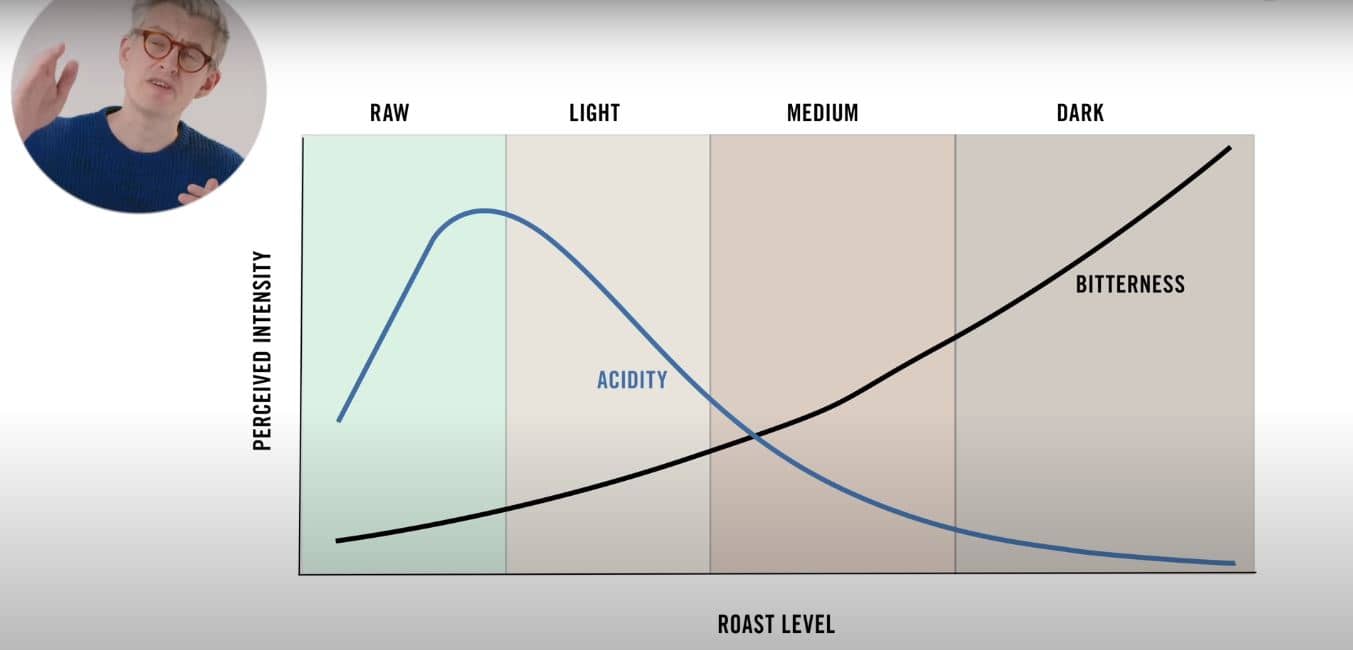
Acidity is the second characteristic, and unlike bitterness that goes straight up as you roast, there is a very slight curve to this one.
Instead of continuing to get more acidic as you get into dark roasts, it starts decreasing. This is exactly why many people prefer to drink darker roasts, because there isn’t that acidic bite.
However, it’s important to note that dark roast coffee is rare to see when it comes to specialty coffees, and this is because of the final characteristic: origin.
Origin
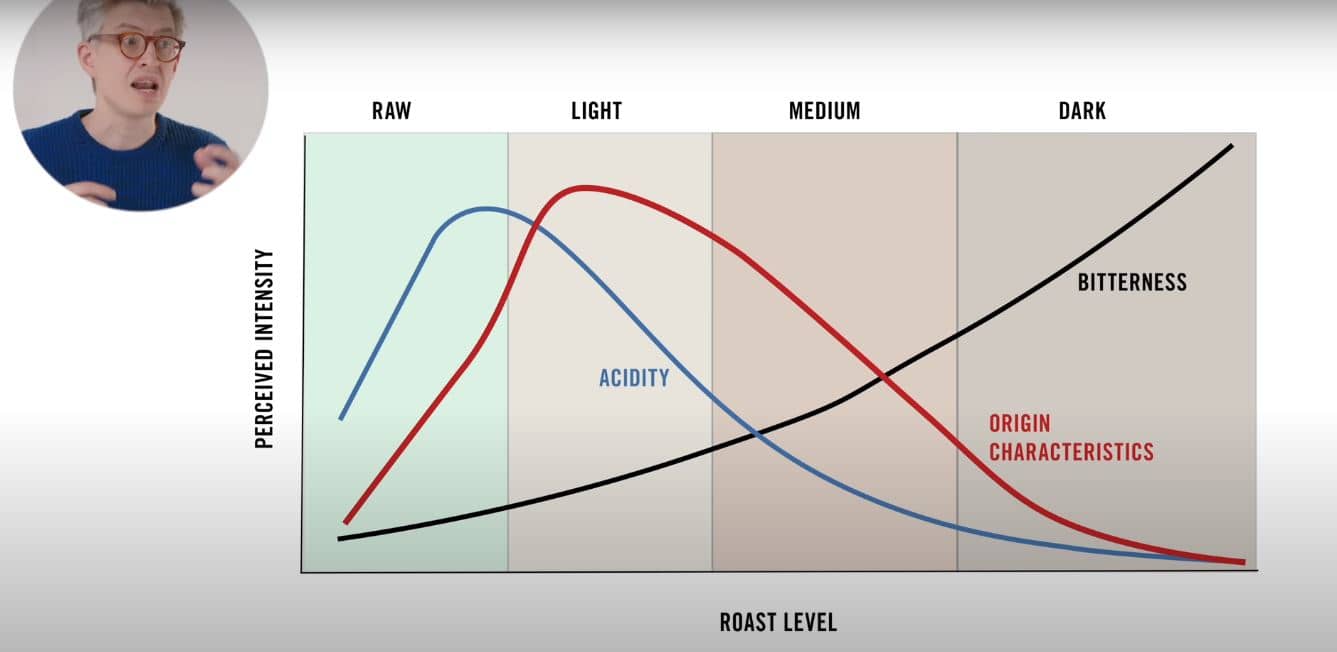
The origin of your coffee includes the climate, altitude, soil type, and how you process it post-harvesting. Coffees produce different flavors, and when you roast them, you can only enhance what’s already there.
The longer you roast the coffee, the more these flavors blend instead of sticking out, giving you a more bland, generic flavor.
This is why there aren’t a lot of dark roast specialty coffees.
Related: A Beginners Guide to Coffee Grinders – James Hoffman
The Roasting Process from Raw to Dark Roast
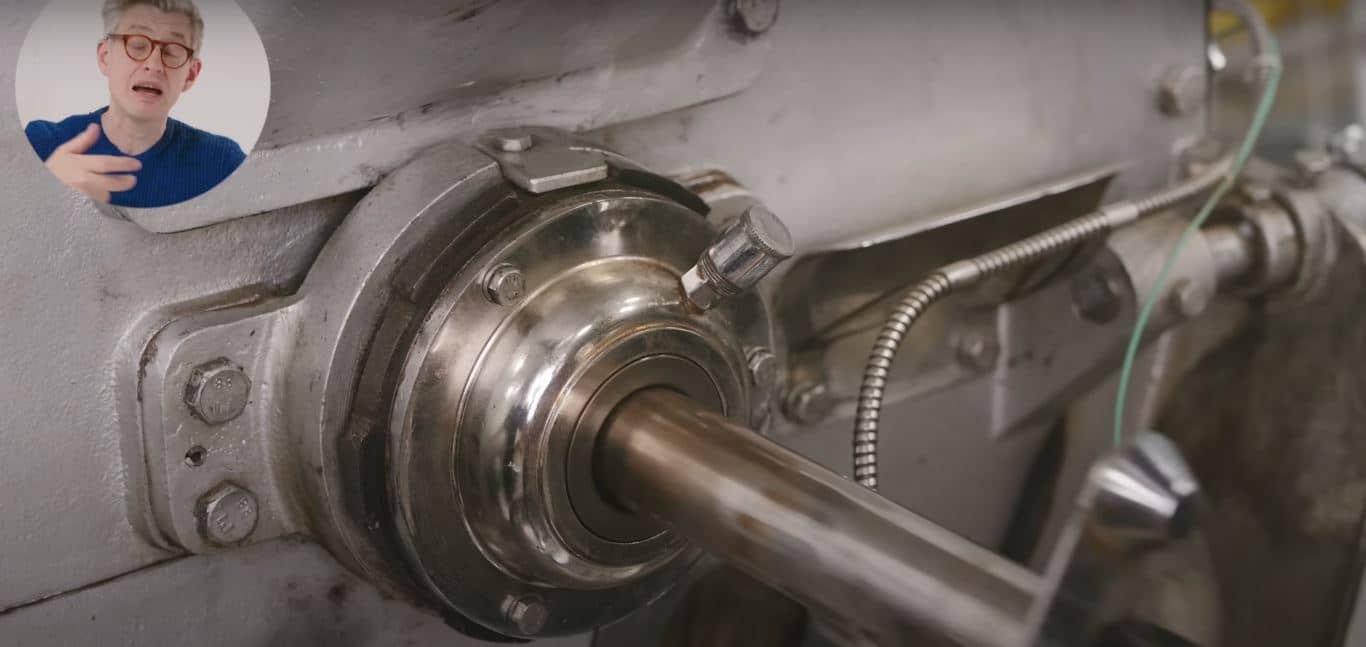
Now that you know the roasting characteristics and what they bring to the table, let's go a bit deeper into the full roasting process. We start with green coffee that is full of moisture and slowly progress through the different roasts. This is also known as roasting chemistry.
Roasting Chemistry

Roasting chemistry is the process where green, raw coffee beans change colors from green to yellow, and eventually to brown. As the roasting process progresses, the water still in the beans turns to steam and builds up pressure while other roasting chemistry forces gases (like CO2) to form.
The building pressure eventually leads to the first crack.
First Crack

When the pressure gets to be too much, the bean cracks open to release the pressure. Not only can you see these cracks happening, but you can also hear them. It sounds sort of like popping popcorn.
After the first crack happens, you’ll start really paying attention to the roasting process as the beans will quickly take on that darker and darker coloring. The color will darken relatively quickly, and the beans will get more even-looking and less wrinkly before going into the second crack.
Many people stop the roasting process at this point before the second crack because right now it’s less acidic and flavorful.
Second Crack

Right before the second crack, the bean will swell and the oils will rise to the surface. The beans will continue to get darker and much more bitter as you roast. It may give you a fuller body and mouth feel at this stage, but individual flavor notes will be very blended and faded.
All of this happens roughly 18 minutes into roasting.
Specialty Coffee Roasting
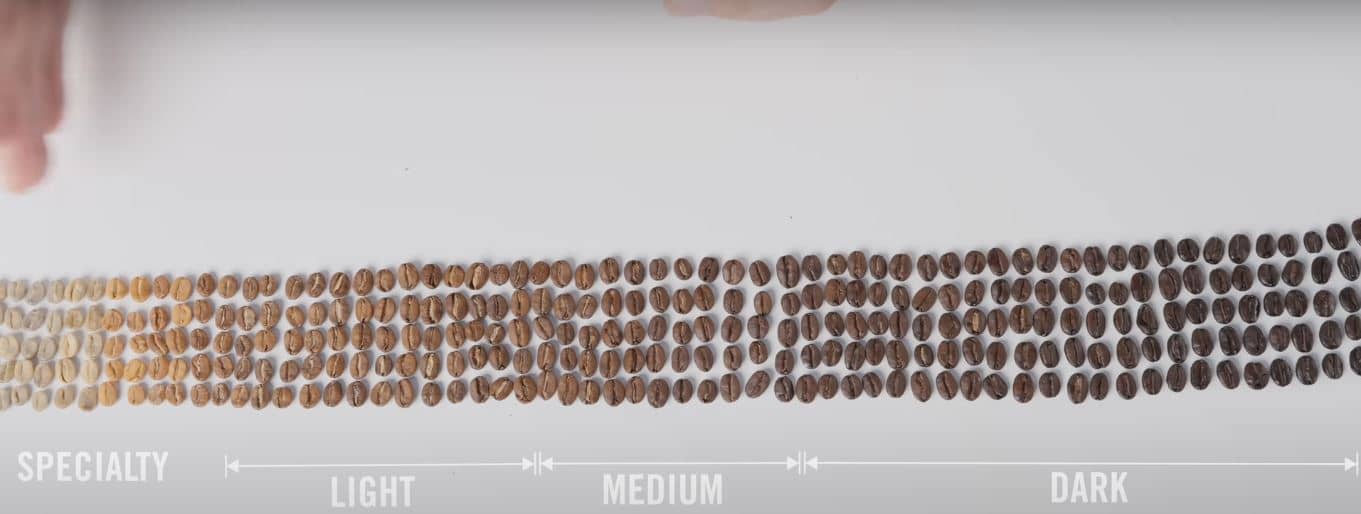
When you talk about specialty coffee, most specialty coffee beans are a light or medium roast. Dark roasts bring the oils to the surface and blend the unique taste profiles.
Commercial Coffee Roasting
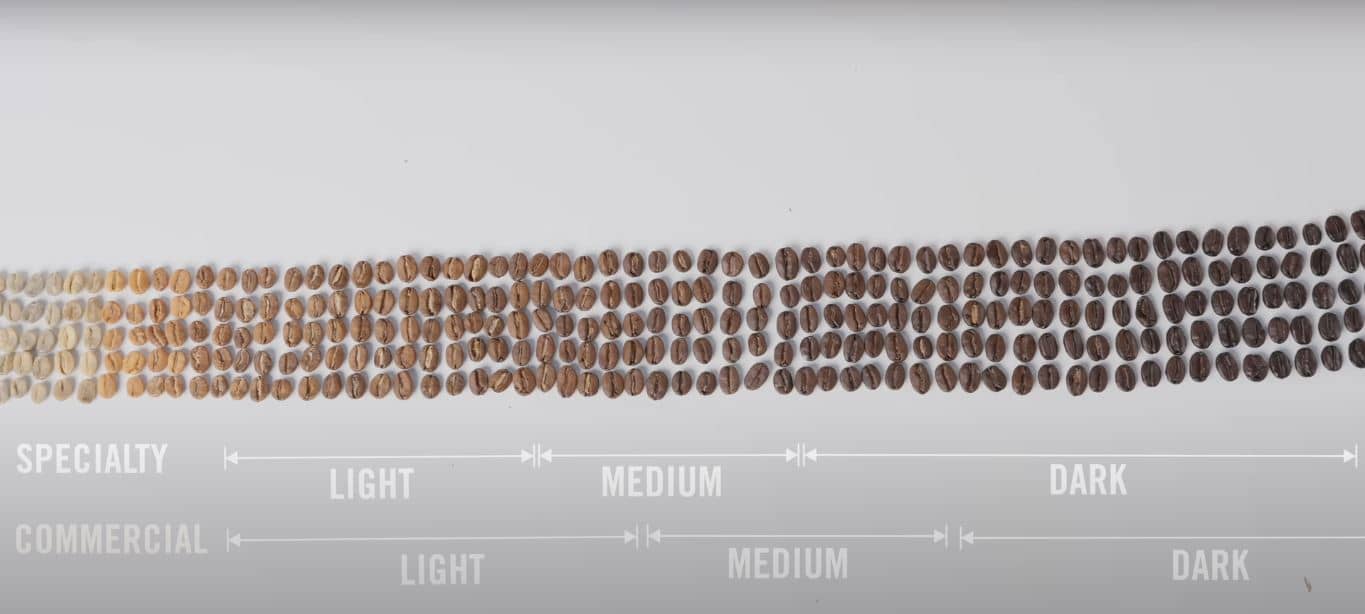
Commercial roasting is a tad different in comparison to specialty roasting. The roast profiles extend slightly, so where a specialty coffee would still be in the light roast category, the commercial would be firmly in the medium territory.
The medium does the same thing, running well into what would be considered dark in specialty coffee, and dark roast is very dark.
Related: The Best Coffee Beans for Cold Brew
What is Roast Profile?
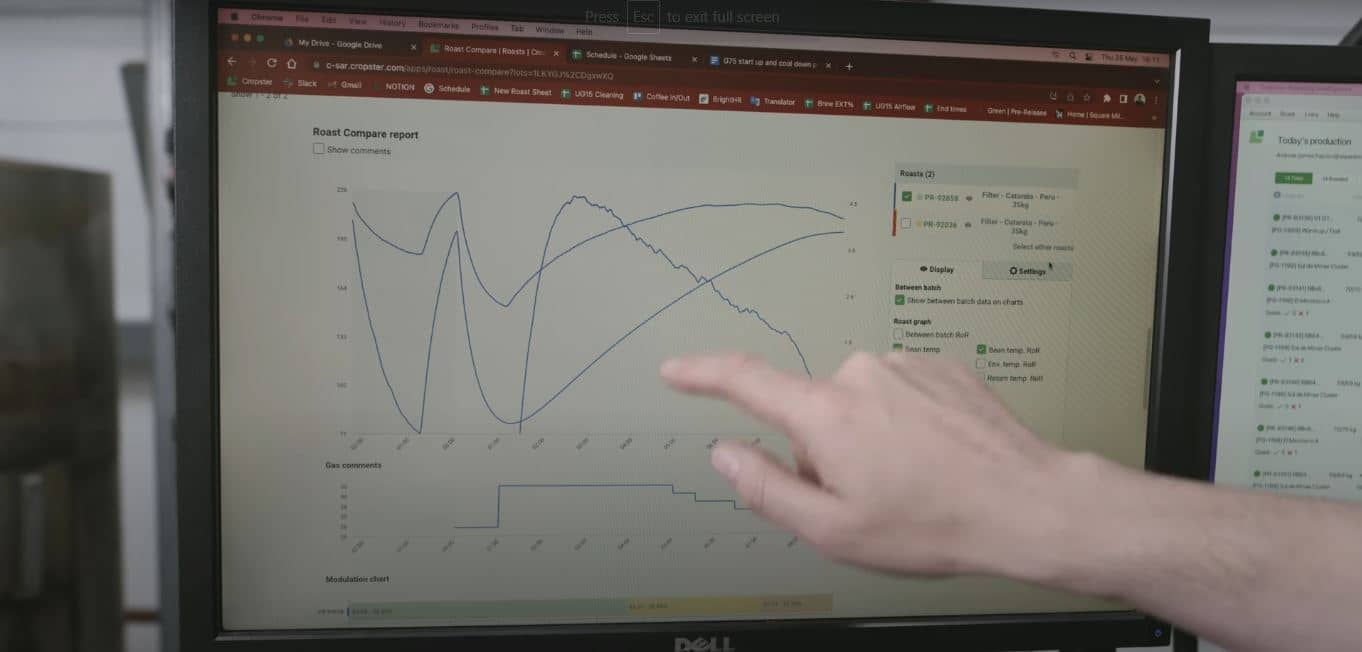
Knowing the general color of the beans for the different profiles is helpful, but it’s not the only thing to consider when you’re figuring out flavor notes and blends. For that, you also have to look at the roast profile, which is a specific set of parameters that define how you roast your coffee.
While you could pour the beans on a pan, put them in the oven, and roast around 400°F there are important parameters to keep track of to achieve the best, most consistent flavor.
These are:
- Bean Temperature
- Roast Loss
- Color Testing
Bean Temperature
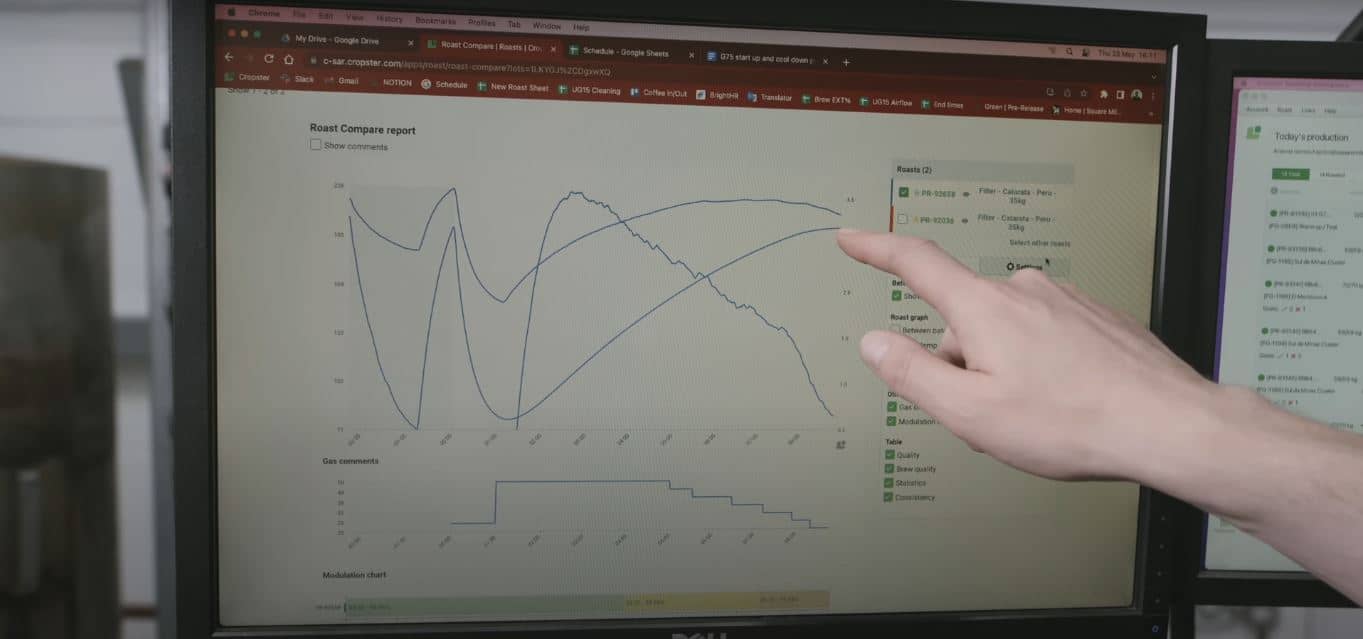
Beam temperature is important because the beans move as you roast them, so they don’t get exposed to a single temperature.
As you can see from the screenshot, the temperature during roasting starts high, drops off sharply, goes high, drops again, and then starts a slightly more steady climb. This is because the roasters are making tiny changes to get the temperature correct for the roast to maximize the flavor.
Roast Loss

When you roast your coffee beans, they’ll lose weight as the moisture gets pulled out of them and they dry.
For example, if you start with 22 lbs of beans, by the end of the roasting process, you could easily lose up to over 20% of the weight and end up with around 17lbs.
Color Testing

Color testing is the final part of the roast profile to consider. You do this by using a machine that measures the brownness of the beans.
Most roasters grind some beans immediately after every batch to see the coloring.
What is an Espresso Roast?
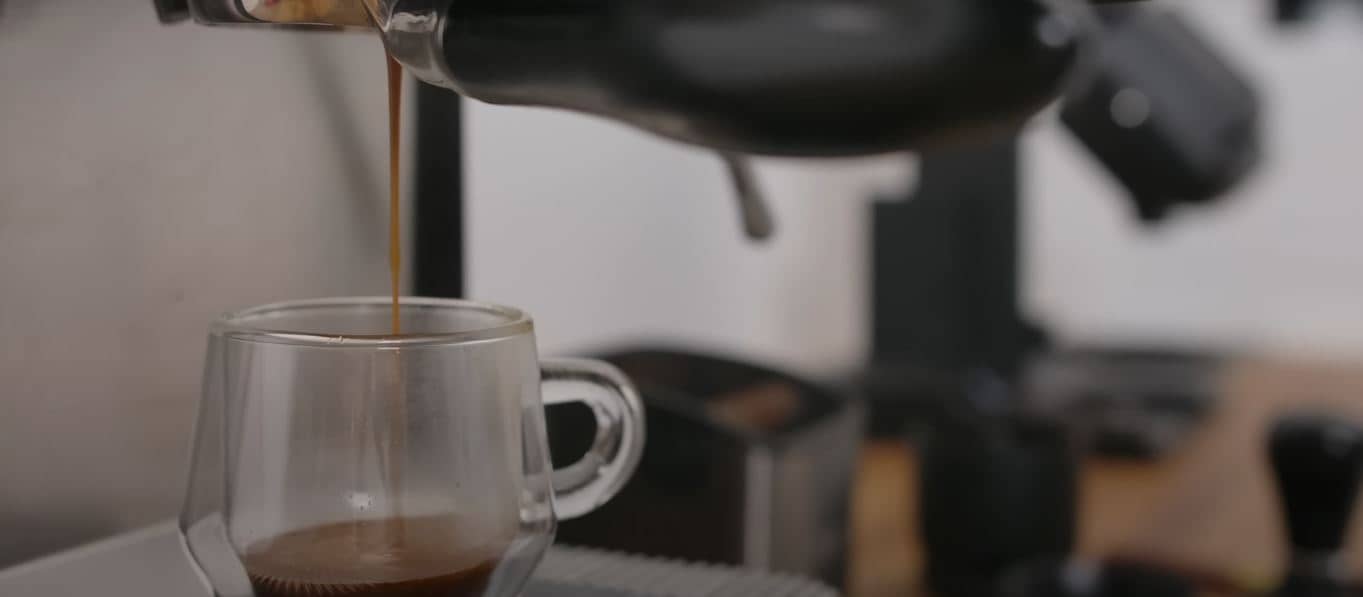
So what are espresso beans? Generally, coffee gets roasted to use with a paper filter like in a classic drip coffee maker, pour-over, aeropress, etc.
If you see “espresso” on the bean label that means that they are specifically made to be used for espresso coffee. This is important because espresso is a unique coffee brewing process from all others that gives you a very strong cup without a lot of water.
Roasters slow the roasting process down and darken the beans a little more to get an espresso roast. Additionally, it’s important to note that you can brew espresso in a traditional machine, a Moka pot, or make it in a pour over. However, what manufacturers are trying to say with this “espresso” label on your coffee is which roasting machine will give you the best flavor.
Is espresso good for you? Maybe you want to know how much caffeine you get in three shots? We have the guides that give you all the information you’re searching for.
How Coffee Roasting Machines Actually Work
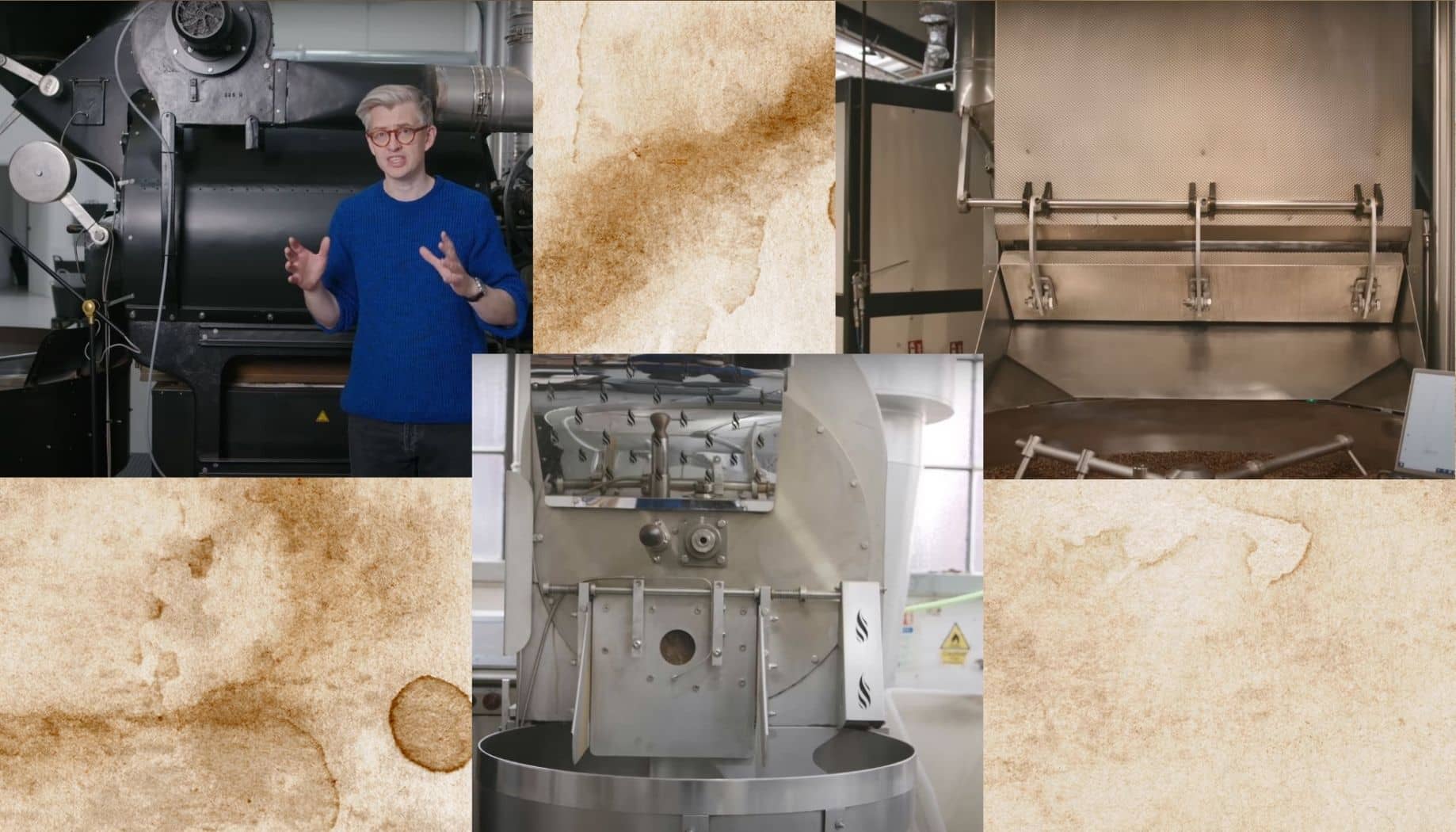
There are a few different types of roasting machines available, and they all work slightly differently. The most common ones are a drum roaster, a hot air roaster, and a hybrid air roaster
Drum Roaster
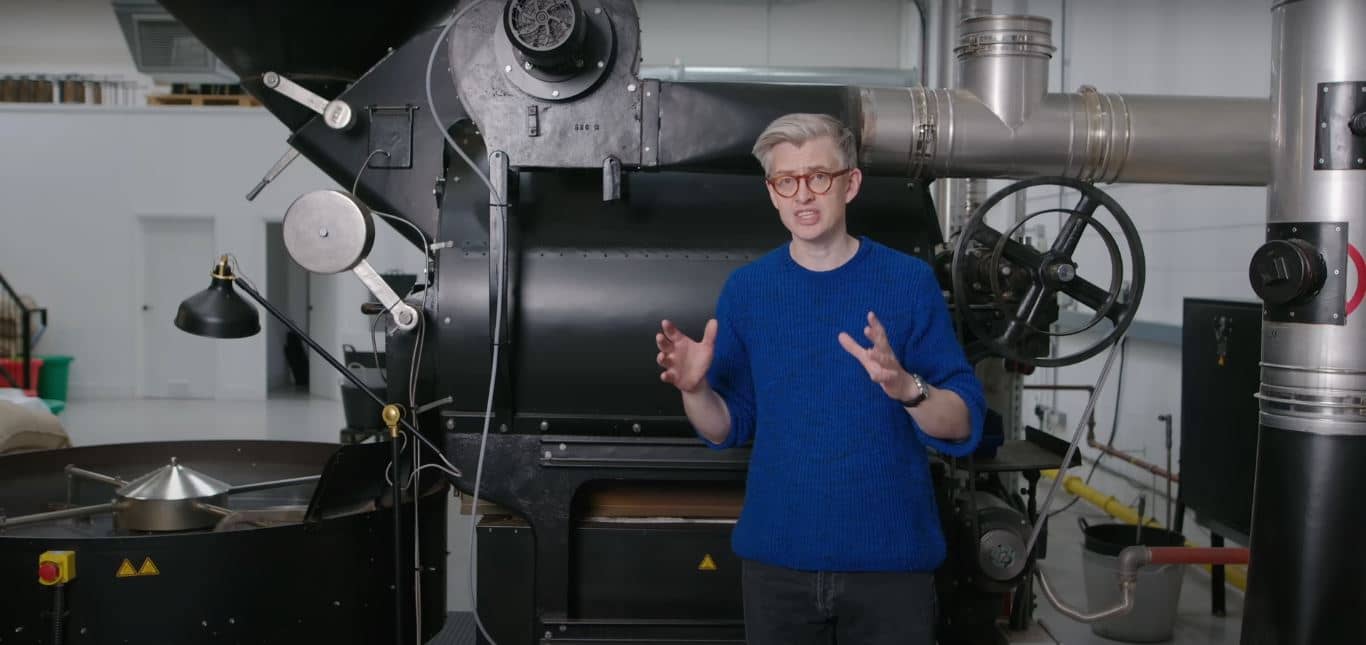
This machine gets the name because the middle has a huge spinning drum that keeps the coffee beans moving as they roast.
Underneath this machine is a heat source (usually a gas burner), and it heats the air and the big metal drum. The air goes through the back of the drum, through the beans, and out by use of exhaust fans.
It works like a convection oven and is popular for use with roasting specialty coffees. It also uses a small bit of conductive heat where the beans touch the hot drum, and radiant heat from the metal.
Cooling
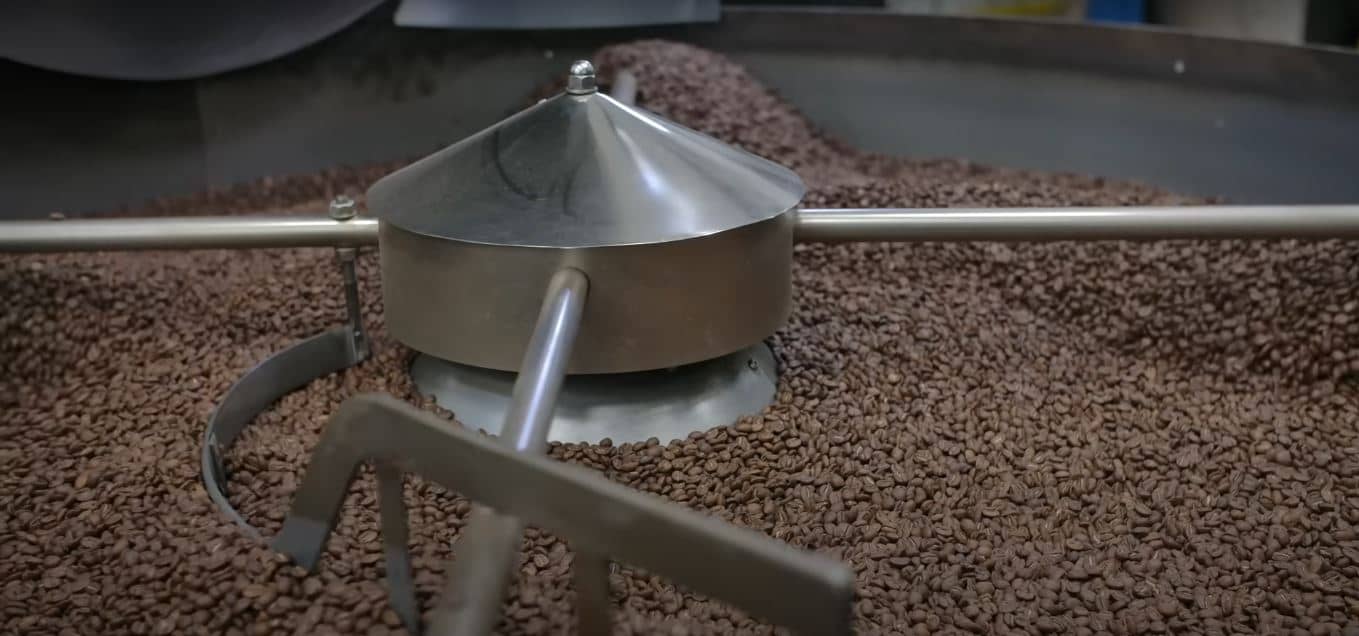
Once the coffee leaves the roaster, the beans are almost 400°F, so they have to go through a cooling process. The goal is to stop the roasting process by bringing the beans down to room temperature as quickly as possible, hence a cooling machine.
The coffee falls into a tray, a large fan pulls cool air in, and large arms mix the beans to expose them to the air.
However, bigger machines use a process called quenching to cool the beans. With this process, the beans get sprayed with a tiny amount of water that evaporates as it comes into contact with the beans, and this quickly cools the beans down.
Hot Air Roaster

This is a slight variation of the drum roaster, and it features a heat source separate from the roaster. There is a blower that blows hot air into the drum, warming and agitating the beans. You can adjust the heat by adjusting how much air goes through at once. You’ll get a very unique flavor using this option.
Hybrid Air Roaster
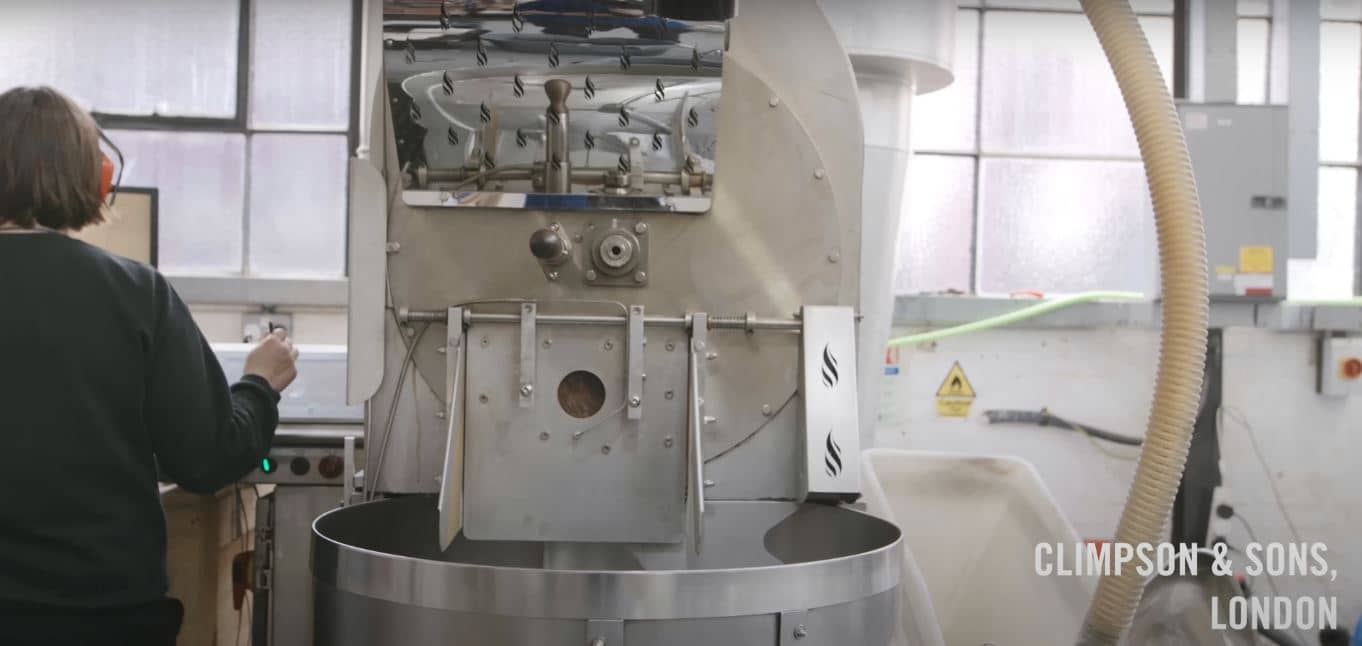
Finally, there is a hybrid air roaster you can use. It features a drum to rotate the coffee beans, but it has a separate heat source. The drum doesn’t get hot, and the machine blows hot air through the coffee to roast them.
